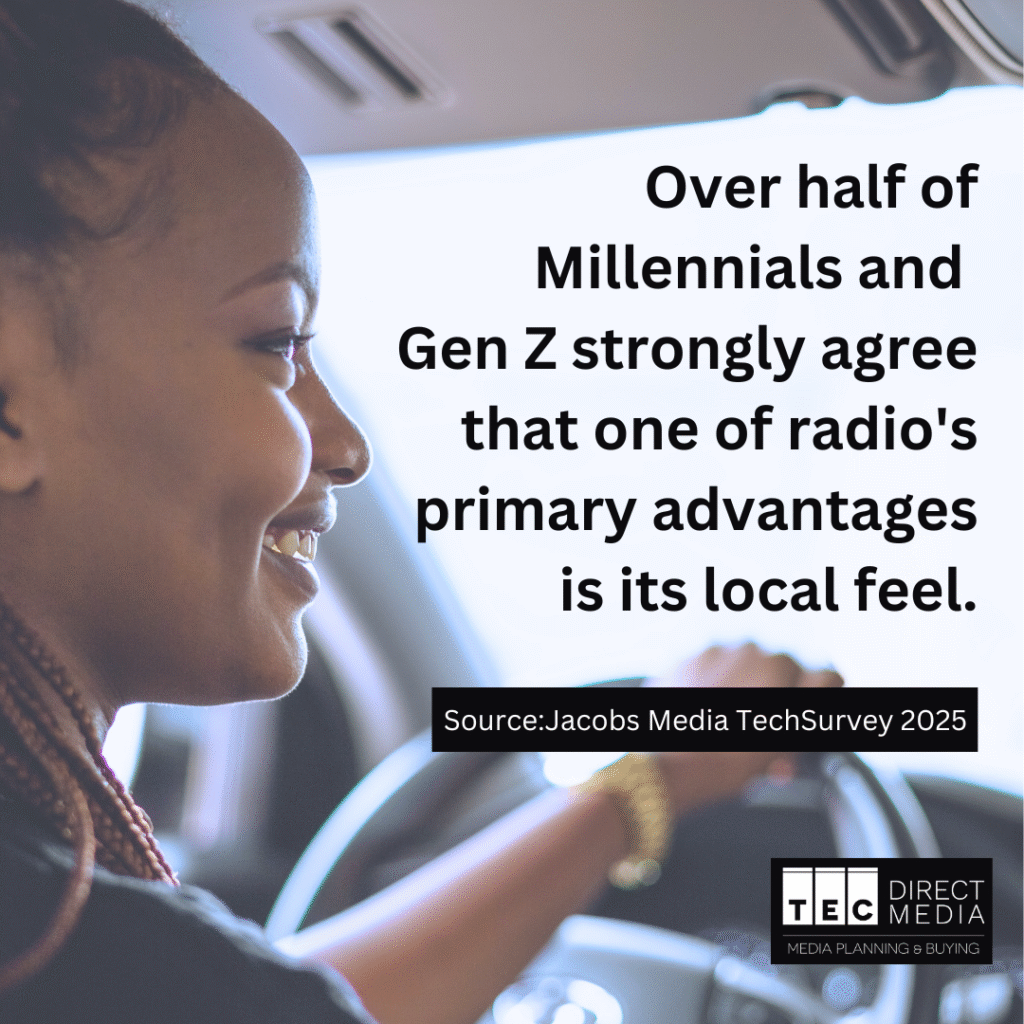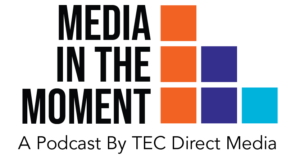Advantages of Radio Advertising
The advantages of radio advertising have been evident since the very beginning. On November 2, 1920, a small station in Pittsburgh, KDKA, made history by airing the first-ever commercial radio broadcast. That live election-night report reached listeners across the city and ignited a new era in communication, entertainment, and marketing.
From that moment on, radio transformed how we connect, learn, and experience the world. It brought news into our homes, music into our daily lives, and storytelling to audiences everywhere. It also quickly became one of the most effective advertising platforms for businesses looking to reach and inspire customers.
100+ Years of Audio That Works
Now, more than a century later, the advantages of radio advertising remain as strong as ever. From the early AM airwaves to FM stereo, from car dashboards to streaming apps and smart speakers, radio continues to move people. It informs, entertains, and builds trust, all while delivering measurable results for advertisers.
As we celebrate more than 100 years of commercial radio, it is worth looking at why this medium continues to be one of the smartest investments you can make in your marketing mix, and how its reach and relevance remain unmatched in today’s multichannel landscape.
Why Radio Advertising Still Works
Radio remains a marketing mainstay because it offers something few other channels can: broad reach, high frequency, and trusted engagement.
Massive Reach: According to Nielsen’s Audio Today 2024 report, AM/FM radio reaches more than 80 percent of U.S. adults weekly, more than television, social media, or streaming video. Edison Research’s The Infinite Dial 2025 reports similar results, showing that 82 percent of Americans age 12 and older listen to AM/FM radio weekly.
Cost-Effective Frequency: Radio’s affordability allows advertisers to achieve the repetition needed to build brand awareness and drive action.
Targeted Messaging: Formats, dayparts, and geographies allow advertisers to reach the right audience at the right time, whether that is commuters, music lovers, or niche communities.
Mobile and Local: Radio travels with listeners throughout their day — in cars, at work, and on the go — building a strong local presence for brands.
Research continues to confirm that this local connection remains one of radio’s greatest strengths. According to Jacobs Media’s Techsurvey 2025, more than half of listeners (54 percent) strongly agree that one of radio’s primary advantages is its local feel, a perception that has remained steady since the pandemic.
The same survey also found that radio hosts have now surpassed music as a leading reason people tune in, underscoring the personal and community-based relationships that keep audiences engaged.

Recent data confirms radio’s continued leadership in today’s evolving audio landscape. According to Nielsen’s The Record: Q3 2025 Audio Listening Trends, AM/FM radio still reaches more than 80 percent of U.S. adults weekly and accounts for nearly two-thirds of all ad-supported audio listening time. In-car listening remains dominant, making radio an essential channel for daily audience connection.
These fundamentals have kept radio relevant through every technological shift, and they continue to make it one of the most effective advertising platforms today.
100+ Years of Radio: A Timeline of Innovation
Radio has continuously reinvented itself over the last century, proving that a powerful medium can evolve without losing its impact. Here’s how we got from that first broadcast in 1920 to the multichannel audio world we know today:
-
1920 – The Beginning: KDKA in Pittsburgh airs the first commercial radio broadcast, reporting presidential election results and introducing audiences to the power of live, real-time information.
-
1930s – The Golden Age: Radio becomes a household staple, delivering news, entertainment, and drama to millions of listeners every day.
-
1950s – Music Takes the Lead: As television enters the scene, radio adapts, shifting focus to music and becoming the soundtrack of daily life.
-
1980s – FM Dominance: Improved audio quality and stereo sound usher in FM’s heyday, giving rise to genre-specific stations and highly targeted advertising opportunities.
-
2000s – Digital Transformation: Online streaming and satellite radio extend radio’s reach beyond the dial, allowing audiences to listen anytime, anywhere.
-
Today – Audio Everywhere: From podcasts and smart speakers to in-car apps and programmatic ad buying, audio continues to grow, reaching consumers across more devices and contexts than ever before.
From Airwaves to Algorithms: Radio’s Evolution as a Marketing Powerhouse
Radio’s story is one of constant adaptation, and that evolution has opened new doors for advertisers. What began as a one-way broadcast from a single transmitter has become a dynamic, data-driven ecosystem that meets listeners wherever they are.
Today, brands can combine the trusted reach of terrestrial radio with the precision of digital targeting. Streaming platforms and podcasts offer granular audience insights, while traditional radio continues to deliver unmatched scale and frequency. Together, they form an audio landscape that is more powerful and more measurable than ever.
If you are new to planning or buying in digital audio, our Digital Audio Refresher is a great place to start.
Want to make sure your audio strategy keeps pace with how consumers actually listen? Read our post on why your audio strategy needs to be mobile-first.
At TEC Direct Media, we help brands navigate this landscape. Whether it is a traditional broadcast campaign, a programmatic audio buy, or a cross-platform strategy that spans AM/FM, streaming, and podcasts, we know how to make audio work harder for your business. While the way we listen has changed, one thing remains constant: audio’s ability to connect, influence, and drive action.
The Future Sounds Strong
Radio has proven itself over 100 years not just as a survivor but as a constant innovator. It has adapted to every new technology and listening habit while continuing to deliver what matters most to advertisers: trusted connection, consistent reach, and measurable results.
At TEC Direct Media, we help brands tap into that power, from traditional broadcast buys to dynamic streaming and podcast campaigns. We know how to combine radio’s unmatched reach with the precision and flexibility of today’s audio platforms to ensure your message resonates in the moments that matter.
As we mark this anniversary of commercial radio, one thing is clear: audio is not a thing of the past. It is a powerful, evolving medium that is still driving growth and building brands, and we are here to help you make the most of it.
Ready to amplify your message? Let’s talk audio strategy.
FAQs
Is radio advertising still effective today?
Yes. Radio remains one of the most effective and trusted advertising channels. AM/FM radio still reaches more than 80 percent of U.S. adults weekly and accounts for nearly two-thirds of all ad-supported audio listening time. Its reach, affordability, and ability to connect locally continue to deliver measurable results for advertisers.
Why is radio such a powerful local advertising medium?
Radio’s deep community roots set it apart from many digital channels. Over half of listeners strongly agree that one of radio’s top advantages is its local feel. Local hosts, regional content, and real-time community engagement make radio a natural choice for brands looking to reach audiences in specific markets.
How does radio compare to digital audio or streaming platforms?
Rather than competing, radio and digital audio complement each other. Broadcast radio provides broad, trusted reach, while streaming and podcasts add precision targeting and extended engagement. Successful advertisers use both; leveraging radio’s scale alongside digital’s data-driven insights for a full-funnel audio strategy.
What types of businesses benefit most from radio advertising?
Radio works for both national and local advertisers. Local retailers, service providers, and event marketers benefit from radio’s geographic targeting, while national brands use it to build awareness and frequency. With flexible formats and placement options, campaigns can be tailored to nearly any budget or objective.




